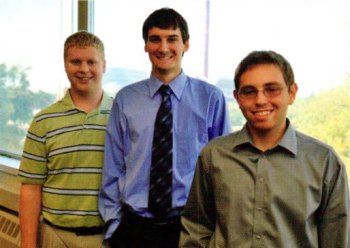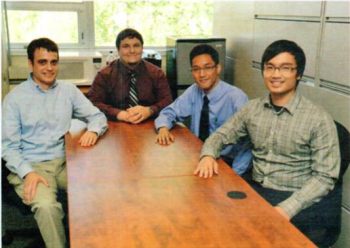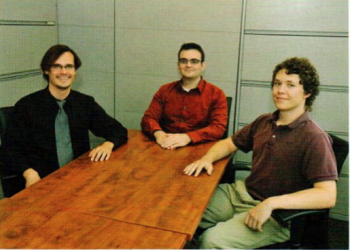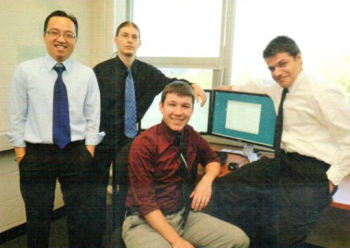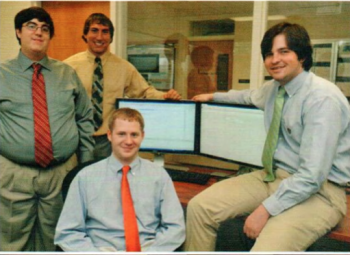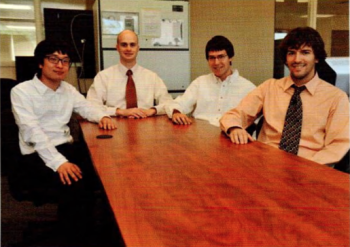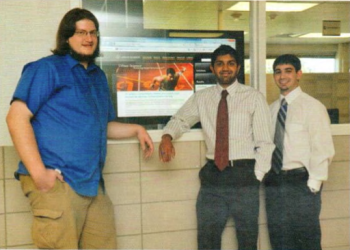Computer Science
Projects
The Capstone Experience provides the educational capstone for all students majoring in computer science at Michigan State University. Teams of students build software projects for corporate clients. For information on becoming a project sponsor, see Project Sponsorship or contact Dr. Wayne Dyksen. The following are the project sponsors and projects for the fall of 2010.
Auto-Owners Insurance: Agent Multimedia Ad Builder
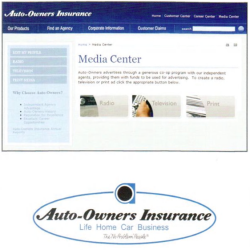 Auto-Owners Insurance provides many different advertising resources to their independent agents. A significant part of this service involves a set of templates of ads, which are available to their agents web-based Media Center.
Auto-Owners Insurance provides many different advertising resources to their independent agents. A significant part of this service involves a set of templates of ads, which are available to their agents web-based Media Center.
In order to make this process easier for both parties, we have created a web application, the Agent Multimedia Ad Builder, that allows agents to create print. TV. and radio ads that are specific to their agency.
The web application allows agents to create profiles with basic information such as agency name and location, which is then automatically incorporated into one of the ad templates. This process makes customization much more convenient since agents simply need to pick a template they like and all their agency information will be used to create the corresponding ad.
For agents who want to include their own touch of editing into the ads, we have created a basic web editor for print ads that lets them drag and drop different pictures into the template. The editor also allows them to edit the written content in place on the ad.
All of the created ads are able to be previewed and saved for later visits through the application. Ads that are complete and ready for submission will be able to be sent for approval by Auto-Owners Insurance to ensure that the ads are cleared for publication.
The Boeing Company: O-Show for Simulation Software
 The Boeing O-Show project is a joint effort between Michigan State University and The Boeing Company to develop specialized software to find and simulate an optimized path for multiple units traveling to a large number of destinations. O-Show stands for “Optimize and Show.”
The Boeing O-Show project is a joint effort between Michigan State University and The Boeing Company to develop specialized software to find and simulate an optimized path for multiple units traveling to a large number of destinations. O-Show stands for “Optimize and Show.”
O-Show is best understood with an illustrative example of how it might be used. Imagine that there are many evaluators who are tasked to evaluate certain properties of basketball arenas in a given state within a given timeframe.
In this scenario, our software allows the user to configure evaluator travel speed, number of evaluators, a starting point, maximum allowed evaluator travel distance, and a list of arenas to visit. The main goal is to optimize the routes of the evaluators in a way that minimizes the number of them needed to accomplish the mission.
The software comprises two parts. First, a launcher takes the inputs for the desired problem. The launcher then feeds the inputs to lp_solve, which is a software library used for solving linear programming models. The launcher then receives the results of lp_solve’s calculations, completing the “Optimize” part of our simulation. After that, our “Show” aspect of the simulation takes over.
“Show”—the visualization—is written in a graphics library called OpenSceneGraph and is used to render a graphical representation of the people, places, and paths of our simulation.
Ford Motor Company: Ford Idea Place Mobile Edition
 A company’s most important assets are its employees and their ideas. In order for employees to document and share these ideas, Ford has developed an online application called Ford Idea Place.
A company’s most important assets are its employees and their ideas. In order for employees to document and share these ideas, Ford has developed an online application called Ford Idea Place.
Ford employees work at many locations, including at manufacturing plants and at supplier facilities. When someone gets an idea at such a location, say on a plant floor, they may not have access to Ford Idea Place. By the time access is available, the idea may be lost.
To address this issue, Ford partnered with Michigan State University, tasking a team of students with developing a mobile solution that is built on Ford Idea Place. The result is Ford Idea Place Mobile Edition.
Ford Idea Place Mobile Edition consists of two custom apps, one for the iPhone and one for the Android, which allow users to share ideas anytime, anywhere. It features the ability to post, view, rate and comment on ideas. Users can even subscribe to authors and categories to keep them updated with ideas that could impact their work stream. As added incentive, users are also awarded achievements for various milestones like posting their first idea.
Further expanding its capabilities, the application can use the device’s physical resources to attach photos, audio or video to ideas. Such functionality allows users to capture an idea fully while the platform’s mobility allows these features to be accessed from anywhere, any time.
GE Aviation: Super Synoptics
 Trying to decipher the vast array o f dials, gauges, switches, and indicators on a modern aircraft flight deck is a challenging
Trying to decipher the vast array o f dials, gauges, switches, and indicators on a modern aircraft flight deck is a challenging
task even in ideal conditions. Compound the problem with flashing lights and warning buzzers from an emergency situation, and it’s easy to see why in-flight problems present difficult and potentially serious challenges for pilots.
Working with GE Aviation, we have designed and built Super Synoptics, a new display which will help pilots better manage an aircraft, particularly during emergency situations.
Super Synoptics provides superior, intuitive instrumentation displays, along with summaries and solutions to current, emerging, and potential aircraft system failures.
Our design streamlines the flight crew’s decision making process, by presenting them with situation-applicable information without overwhelming them with system information that is not currently relevant.
Super Synoptics is designed with a simple, clean, cursor- free screen navigation scheme, which is important in turbulent and emergency situations where cursors, whether via mouse or touch-pad, are unreliable and impractical.
The Super Synoptics system is comprised of the Super Synoptics Display, built with OpenGL, and is interfaced with the X-Plane flight simulator, which is used to simulate an aircraft and demonstrate the use o f our system. The two applications communicate via a data plugin and TCP sockets.
Medtronic, Inc.: Medtronic Wellness Portal
For over 50 years, Medtronic’s mission has been to alleviate pain, restore health, and transform the way the world treats chronic diseases so patients can live a fuller life. To this end, the Medtronic Wellness Portal enables patients toDashboard manage their diet, health, and activity levels in a streamlined, more convenient way.
The heart of the Wellness Portal is to help a patient understand the impact of their food and exercise choices on their overall wellness. Patients can track a wide range of goals such as weight, activity levels, blood sugar, or daily calorie intake, with a goal to reinforce healthy choices.
The Wellness Portal is comprised of web and iPhone applications that allow users to quickly input data. If, for example, the user wishes to track a daily caloric input, the application has a fast and easy way to input food eaten at any time of the day. The user can see at a glance the total calories consumed compared to the daily goal.
Along with user input, the portal also automatically inputs and tracks data from the patient’s Medtronic devices, such as insulin pumps or a continuous glucose monitor, as well as from the user’s Google Health account. Graphs are used to show data correlation and, by using analytics, appropriate observations and recommendations are made.
The web application is written in Grails, a web framework for Groovy. The iPhone app is written in Objective-C.
Meijer: ITS Products and Services Request System
We have developed a web portal built upon SharePoint, which consolidates all ITS products and services. In addition, our portal includes a standardized form for all requests.
The portal directs customers to the ITS Service Request Catalog. Customers are then able to view the available products and services via an expandable menu. When a service is selected from the menu, a detailed description of the service is displayed. Once the desired service is found, the user is directed to the corresponding form to request it.
After a form is filled out and submitted, a copy of the form is stored within SharePoint and an entail is sent to the existing ticketing system, which handles such requests.
The goal of our web portal is to make it easier for Meijer employees to find and request the desired ITS products and services and to provide the ability to view the status of their request, thereby allowing ITS to provide quicker request turnaround rates. By using our web portal, the user and ITS will save valuable time, thus increasing productivity.
The site is developed in ASP.NET and C#. The forms are created with Microsoft InfoPath. The database is created with Microsoft SQL Server 2008.
Motorola: Enhanced Program Guides for Mobile Devices
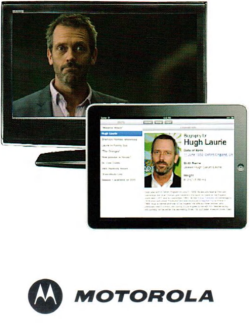 Television has become more intertwined with the World Wide Web than ever before. With the emergence o f smart devices, consumers are connected wherever they go. Motorola aims to leverage these platforms and give consumers the ability to follow’ their favorite programs wherever they may be, while providing a television viewing experience unlike any other.
Television has become more intertwined with the World Wide Web than ever before. With the emergence o f smart devices, consumers are connected wherever they go. Motorola aims to leverage these platforms and give consumers the ability to follow’ their favorite programs wherever they may be, while providing a television viewing experience unlike any other.
Our Enhanced Electronic Program Guide (EEPG) allows a content provider to create and manage supplementary content through an easy to use web interface. The provider can associate this content with a TV program and choose a specified time when it should appear on a synced mobile device during the viewing of a show. This content can be used to enhance the television experience by providing new and exciting information to the viewer as a show airs.
The EEPG allows consumers to receive this supplementary content on their mobile device as they watch their favorite shows. The EEPG is presented in an intuitive interface that alerts the user when new- content is available. It displays the content in a non-intrusive manner and in user selectable layers.
The EEPG serv ice is written in Java with a RESTful architecture and deployed on a Glassfish server. Our persistent data is stored on a MySQL database and accessed through an iBatis persistence layer. The Secondary Content Creation Tool is written in Java using Google Web Toolkit and the iPad mobile application is written in Objective C.
TechSmith: Extending Apps with Cloud Asset Sharing
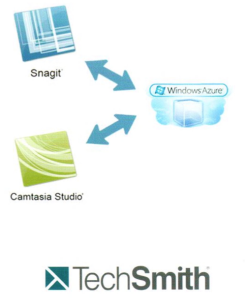 TechSmith is harnessing the power of the cloud to create a new resource for sharing and acquiring assets for two of their most popular programs, Snagit and Camtasia Studio. Using Microsoft’s Windows Azure cloud platform, this program enables users to easily browse and download shared assets or to upload and share assets with friends, groups or the whole world. Sharable assets include things like images and video clips created by users, as well as other graphical elements such as callouts and title screens.
TechSmith is harnessing the power of the cloud to create a new resource for sharing and acquiring assets for two of their most popular programs, Snagit and Camtasia Studio. Using Microsoft’s Windows Azure cloud platform, this program enables users to easily browse and download shared assets or to upload and share assets with friends, groups or the whole world. Sharable assets include things like images and video clips created by users, as well as other graphical elements such as callouts and title screens.
Once a user has downloaded a new asset, it is automatically installed into the correct location for each program for immediate access. Additionally, a special plug-in for Snagit allows users to instantly save their images to the cloud.
Users will enjoy a more efficient and richer experience as we make it easier for them to share and find these assets.
Snagit is a screenshot program that replaces the native Print Screen function with additional features, such as the ability to take shots of entire web pages or shots of the contents of a program window. It also contains a built in editor that automatically opens after taking a shot.
Camtasia is a screen video capture program that allows users to capture what is happening on their screen in video. The user may define the area of the screen or the window that is to be captured or the whole screen can be recorded instead.
Urban Science: Modern Online Analytical Processing Cube
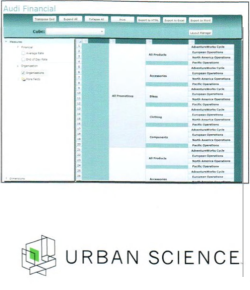 As one of the most trusted sources of analytical data Audi Financial in the industry. Urban Science helps their automotive
As one of the most trusted sources of analytical data Audi Financial in the industry. Urban Science helps their automotive
and retail clients plan effectively, define and measure performance, and develop sales and marketing programs that deliver results.
In order to produce these results, very large amounts of data need to be analyzed very quickly and efficiently. A special kind o f database structure— OLAP (On Line Analytical Processing) cube—is used as a querying tool with a user- friendly interface.
The figure at the right shows our OLAP cube dashboard interface and functionality.
Our dashboard is accessible from the internet, while the database is stored at a remote location off-site. Customers need not install any additional software, thus giving our program a zero-footprint for our end-users.
Users can manipulate the various dimensions available to them based on a given set of data and view it in a pivot. The PivotViewer enables the user to present extensive data so it can be manipulated for sorting and saving for later use.
A widely requested functionality for this program is the ability to print data, which is provided bv a one-click PDF link.
The program uses Microsoft Silverlight and XAML for the interface, ASP.NET and C# for the processing, and Microsoft SQL Server and MDX for database manipulation.

